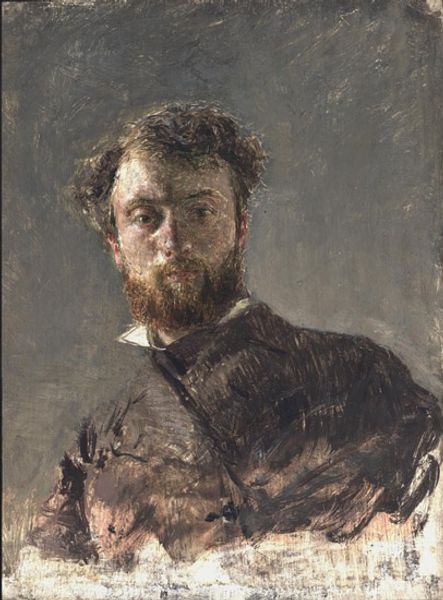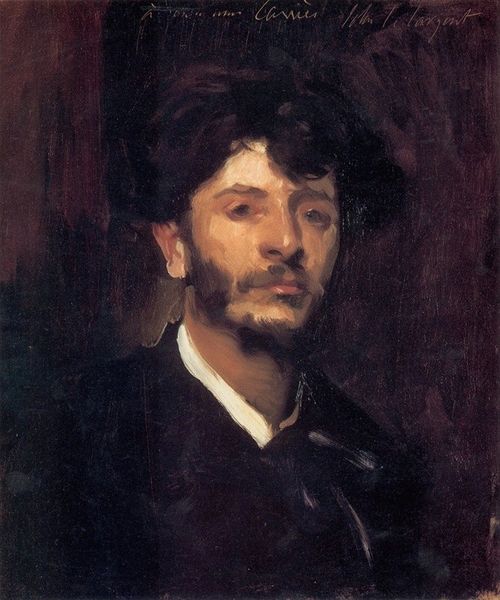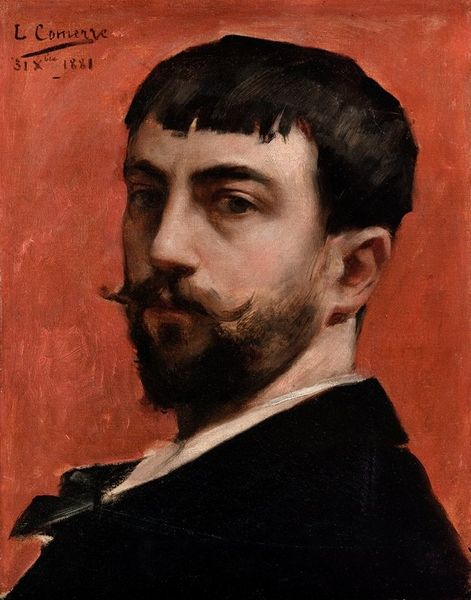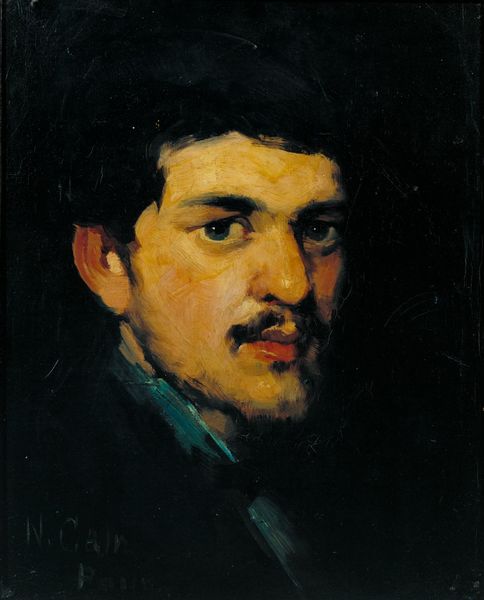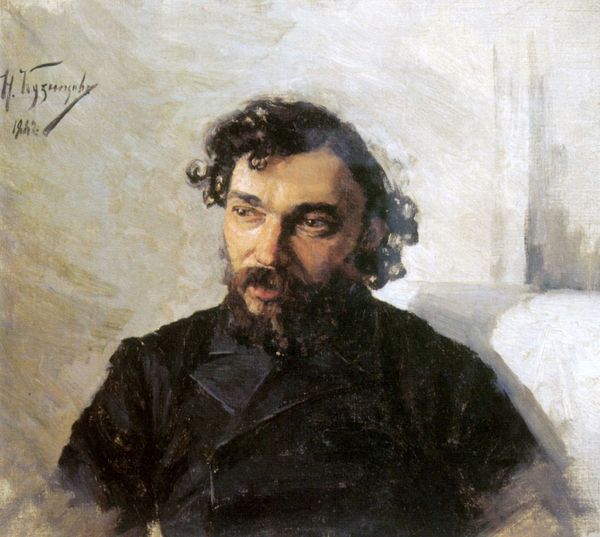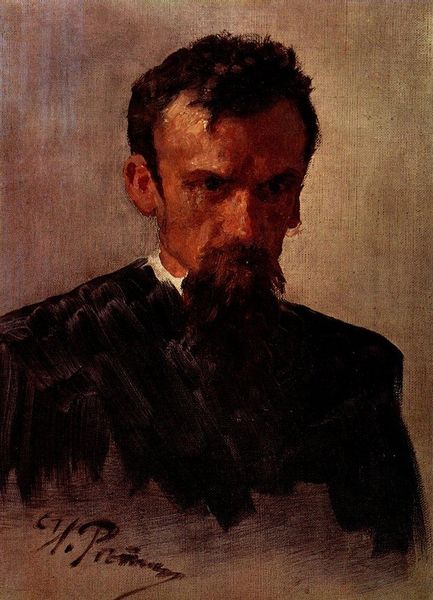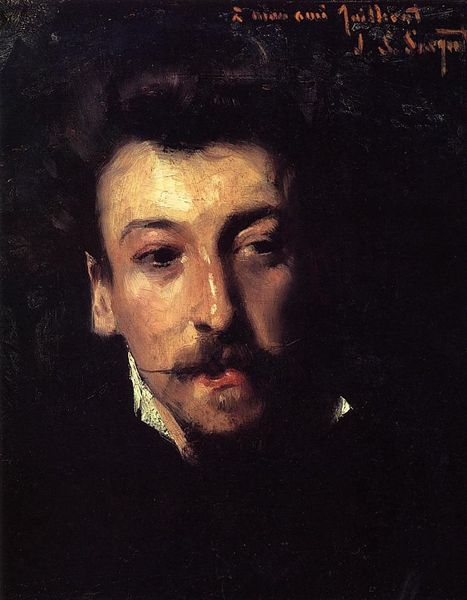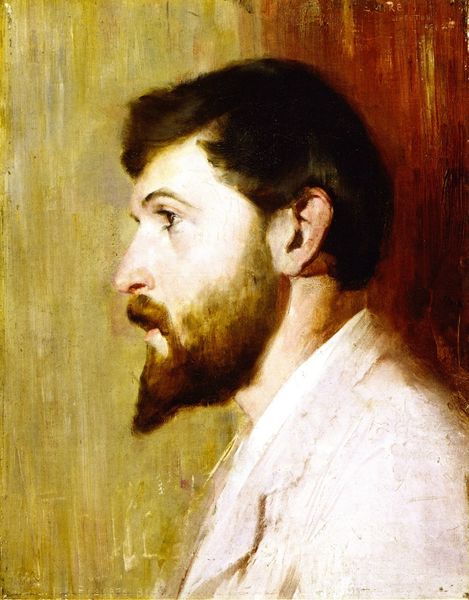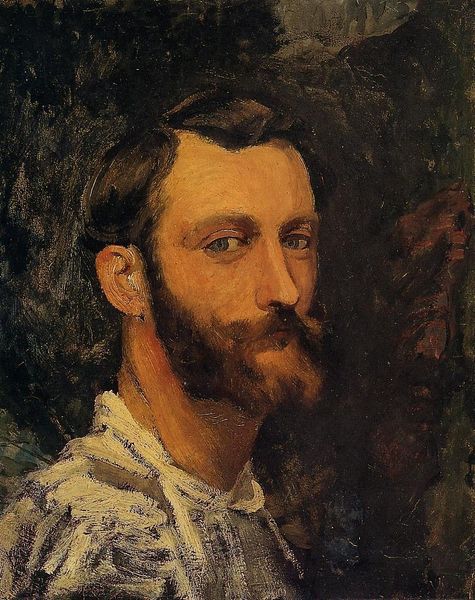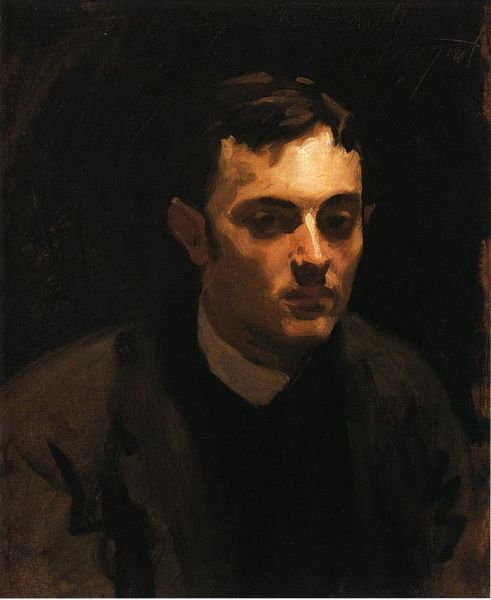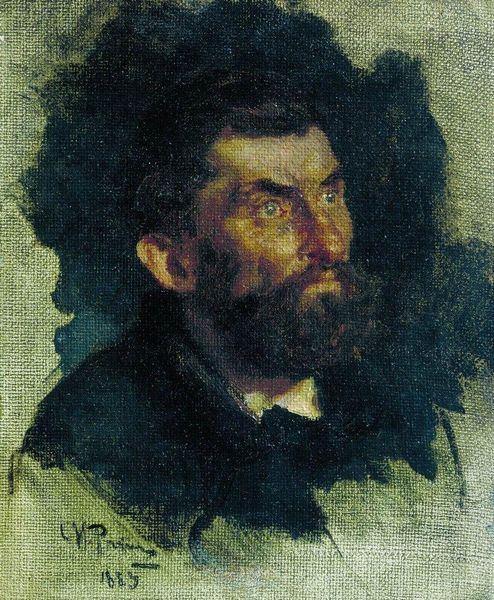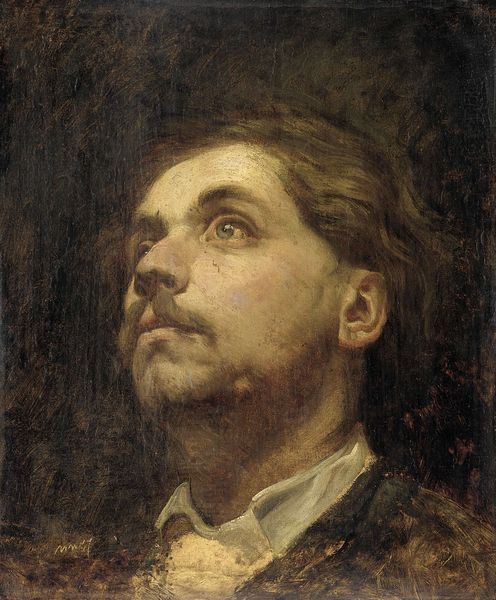
painting, oil-paint
#
portrait
#
painting
#
impressionism
#
oil-paint
#
realism
Dimensions: 73.66 x 60.32 cm
Copyright: Public domain
Curator: John Singer Sargent painted this portrait of Ernse Ange Duez in 1885. What a remarkable rendering, isn't it? Editor: The weight of the black coat really anchors the piece. Almost makes the white floral background seem ethereal by contrast, as if he is emerging out of it. I'm curious about that brushwork—it's both so precise in the face and then looser elsewhere, which probably has implications for the painting process and what Sargent hoped to portray. Curator: Sargent was at the peak of his career at the time. Duez was also a respected painter. These portraits played into an interesting dynamic in artistic circles—almost a performance of recognition and mutual respect. They were shaping their legacies by acknowledging each other in the public eye, through institutions and salons. Editor: Indeed. There is a visible layering that contributes so much to the textures—how oil-paint achieves these results based on skillful, repetitive applications is astonishing. You can see Sargent has also clearly prioritized the face as a focus. Softer strokes surround, all drawing the viewer's attention centrally. It almost hints at how different mediums contribute differently towards shaping narratives within one artwork itself! Curator: It is worth noting the somewhat controversial reaction Sargent’s works received at the time, criticized by some establishments, then celebrated by others. The portrait tradition often walked a tightrope, needing to please the sitter but also innovate enough to impress critics and potential patrons. What do you think this says about the broader art market of the time? Editor: It is so easy to view portraits through such high art expectations when, really, the labor that's physically put into creating it plays a huge part as well. How the piece might've even felt—all that thick impasto layered strategically to create a unique depth. Curator: Exactly! I hadn't quite considered the painting through this perspective; now I am also questioning the very labor behind artistic acknowledgements of this period. Editor: These material aspects truly provide layers for engaging in these conversations, wouldn't you agree?
Comments
No comments
Be the first to comment and join the conversation on the ultimate creative platform.
